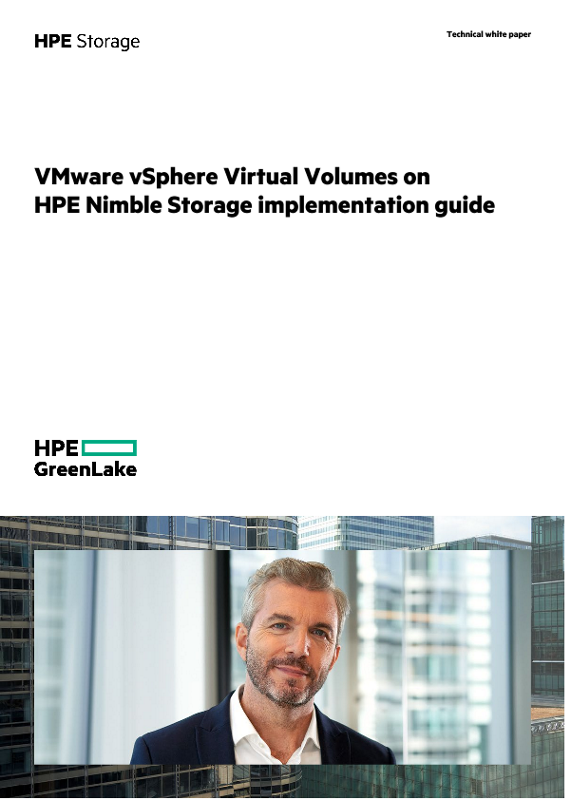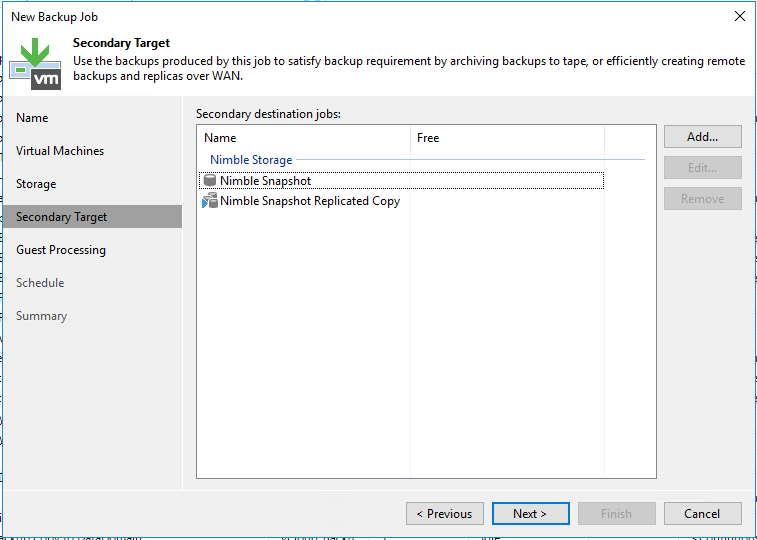

- #Nimble storage vmware integration guide install#
- #Nimble storage vmware integration guide zip file#
- #Nimble storage vmware integration guide software#
- #Nimble storage vmware integration guide series#
- #Nimble storage vmware integration guide download#
Select Create new volume collection and enter a name. Replication is configured in the Protection tab, either during the New Volume wizard, or for an existing volume by clicking the volume and Edit, then selecting Protection. In the Nimble web UI for the replication source array, navigate to Manage, Volumes.

Now we have an available replication target we can configure replication of important volumes. The replication partner will now be listed with a status of OK, the Test function should come back with a success message. Repeat the process on the replication target Nimble array, adding a replication partner for the replication source array. If you want to configure bandwidth limits this is done on the QoS Policy page, click Finish once complete.
Specify any folder assignments if required. Specify if replication traffic should use the existing management network, or specified data IPs. Enter a shared secret, this will be configured the same on both arrays. Enter the hostname or management IP address of the target Nimble array. Enter the group name of the replication target in the partner name field, the group name can be obtained by logging into the web UI of the target Nimble array and clicking the Group referenced in the top right hand corner, or by navigating to Manage, Arrays. The replication partner wizard will load. Log into the Nimble web UI using the management IP address or FQDN of the desired replication source array. From the drop-down Manage menu, select Protection, and Replication Partners.Įxisting replication partners will be listed, at this stage we don’t have any. Build them into your image if you are using VMware Auto Deploy. Inject the VIBSs into ESXi manually (see ESXi Command Line Upgrades for assistance). #Nimble storage vmware integration guide zip file#
Deploy the zip file using VMware Update Manager. #Nimble storage vmware integration guide install#
The downloaded zip file contains the Nimble VIBs, you can install these using one of the following methods:.
#Nimble storage vmware integration guide download#
Click Connection Manager (NCM) for VMware and download the appropriate version. #Nimble storage vmware integration guide software#
Log in to InfoSight and select Software Downloads from the Resources drop down. Installing the Nimble VIBs is not included in the scope of this article, however I have briefly outlined the process below. Otherwise, enter the required vCenter information to register with the Nimble Storage array.įurthermore, any ESXi hosts connected to Nimble volumes should have the Nimble Connection Manager installed, which includes the Nimble Path Selection Policy (PSP) for VMware. If the correct vCenter Server is already registered confirm the settings using the Test Status button. From the drop-down Administration menu select VMware Integration. However, to check log into the web UI of both the replication source and target Nimble arrays by browsing to the IP address or FQDN. If you’re using Nimble to present LUNs to VMware then it’s likely you configured VMware integration during the initial configuration. Nimble arrays are supplied inclusive of all features, so there are no additional licensing costs for replication. This means the replica is in an application-consistent state and can be cleanly brought back online in the event of failover. In my environment I will only be using VMDK for the virtual storage and can utilise the Nimble built in vCenter synchronization to quiesce I/O during snapshots. The SRA is the main integration point between SRM and Nimble allowing storage interactive workflows to be initiated from SRM. 
Make sure you review the Nimble Storage Best Practices for VMware Site Recovery Manager guide.Īll Nimble Storage arrays are listed on the VMware Compatibility Guide, and Nimble have been providing a VMware specific Storage Replication Adapter (SRA) since version 5.1 of SRM. It is best practice to have Active Directory and DNS servers already running at the secondary site, and also recommended for virtual machine swap files to be stored in a dedicated datastore without replication.

Part 3 – Site Recovery Manager Configuration and Failover Guideīefore beginning ensure that time synchronization and DNS are in place across the Nimble arrays and vCenter / SRM servers. Part 2 – Site Recovery Manager Install Guide Part 1 – Nimble Storage Integration with SRM
#Nimble storage vmware integration guide series#
The following posts in this Site Recovery Manager series detail the end to end installation and configuration process. This post will walk through the steps required to prepare Nimble Storage arrays at primary and secondary sites for VMware Site Recovery Manager (SRM) using array based replication.








 0 kommentar(er)
0 kommentar(er)
